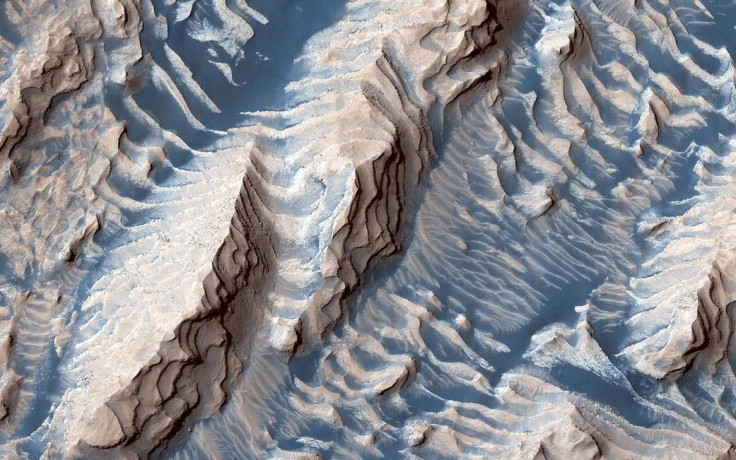NASA Space Mission Shocker: Dust Towers Could Prove Life Existed On Red Planet

Even though a dust storm that encircled Mars for months ended NASA's Opportunity mission after sunlight was unable to reach the solar-powered rover, NASA’s Mars Reconnaissance Orbiter was able to track valuable information about the storm that is helping the scientists understand the phenomenon.
The data sent back by the orbiters included what seemed like dust towers that formed during a 2018 storm. According to NASA, dust towers are massive, churning clouds that are denser and climb much higher than the normal background dust in the thin Martian atmosphere. They occur when dust clouds react to the warmth of the sun and rise vertically. While they also occur under normal conditions, the towers appear to form in greater numbers during global storms.
Per a Forbes report, NASA also described a dust tower to have started at the planet's surface as an area where lifted dust can grow to as wide as the state of Rhode Island. It may be as wide as Nevada by the time a tower reaches a height of 50 miles (80 kilometers). As the tower decays, it can be wider than the continental United States since it can form a layer of dust 35 miles (56 kilometers) above the surface.
Now what’s interesting in these dust storms is that the phenomenon is linked to gas that escapes from the atmosphere of Mars. Now, new studies appearing recently in the Journal of Geophysical Research: Planets and the Journal of the Atmospheric Sciences help explain how Mars’ atmosphere lost much of its water vapor.
“Dust towers affect the loss of water to space because water is normally not well-mixed in Mars’s atmosphere,” said Nicholas Heavens of Hampton University. He added that water vapor is confined to low altitudes from where it can be split apart by UV light and lost.
“The open question is how important dust towers (or analogous processes) were in Mars’s past,” said Heavens. The explanations led others to speculate that life could have existed on the Red Planet. As of late, NASA is not yet able to understand how much these towers contributed to Mars’ water loss and other phenomena in the past.
According to NASA's planetary scientist, David Kass, the bottom line is that Mars' current dynamics of atmosphere are more active than before.
© Copyright IBTimes 2025. All rights reserved.





















